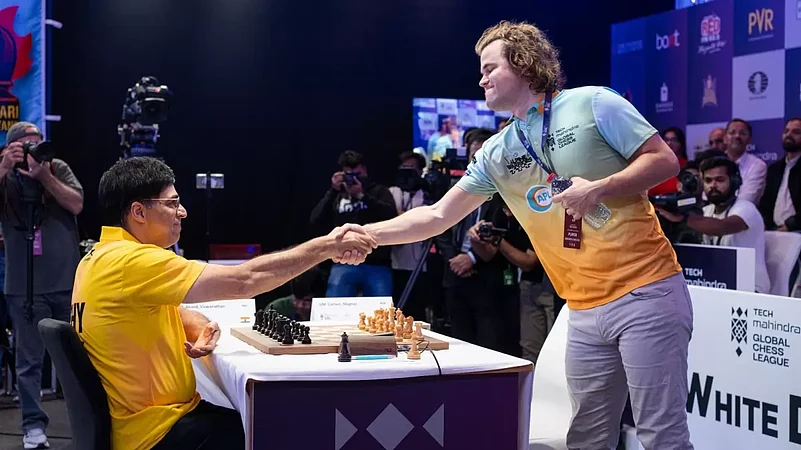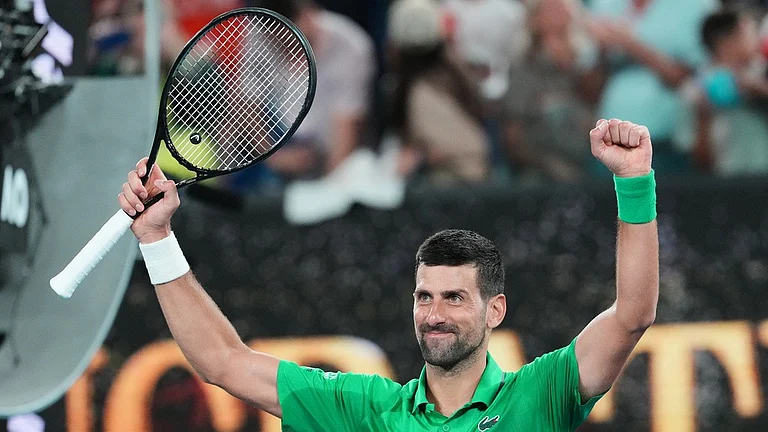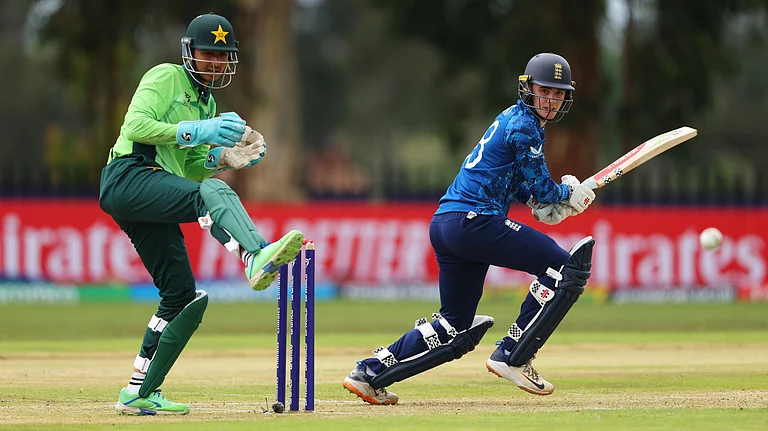Chess is known for its evocative glossary. It is the sport of Sicilian Narjdorf and the Catalan Opening, of the Zugzwang and the Frankenstein-Dracula Variation, to name just a few. So a fitting label for its latest baby, the IPL-style Global Chess League in progress in Dubai, is perhaps warranted. Desert Gambit, maybe?
The sport has always been cool in an intellectual, Big Bang Theory way. Brains and eccentricity are sexy. But the overall image of the sport was of an inaccessible, esoteric activity. Games would be played in staid halls, while the players seemed remote and unapproachable, too smart for the masses, too internalized due to the demands of their sport. Chess players were not always the choice brand ambassadors for consumer goods either. But now, Magnus Carlsen, the game’s current icon, is the face of G-Star RAW jeans and Mastercard, among others. Then there is social media, which has given chess players an avenue to reveal their personalities, which humanizes them in the eyes of followers.
The GCL promises to make the sport more appealing and relevant. With men and women competing together in six teams, and with the tournament having a stated objective of capturing the OTT audience, the GCL is chess at its most contemporary. The number of viewers targeted is in the range of 600 million, according to Viswanathan Anand, the Indian legend and GCL chairman.
“I believe what we’re attempting to do is reach a large audience, which, as we know from FIDE’s statistics, numbers somewhere in the 600 million range. We have devised an intriguing format and an exciting competition, a global league, with the best men, women, and juniors all on the same team,” Anand said in an interview.
Elaborating further, the five-time World Champion said, “It [the GCL] was partly driven by the desire to see what we could explore on television. The time slots had to be convenient as well. You have to have exciting matches while keeping the outcome flexible till the finish.”
The six teams are competing in a double round-robin format. Each team has six players, consisting of a marquee player, two men, two women and one junior player (under 21).
Not only is the tournament packaged in an attractive way, it moves the gender equality argument forward, intentionally or otherwise.
“For the first time, we have this in chess,” Grandmaster (GM) Harika Dronavalli, representing UpGrad Mumba Masters, says about the concept as a whole. “And it's really cool that many players from different parts of the world are together, as one team. I think it will help chess become more popular.”
Harika professes admiration for Judit Polgar, as the Hungarian star was a flagbearer for women’s sport. In 1991, Polgar became the then youngest GM in chess, eclipsing the great Bobby Fischer. Fischer was 15 years, six months and a day old when he became GM. Polgar got there at 15 years, four months and 28 days. The current record is held by American Indian Abhimanyu Mishra, who got the norm at 12 years, four months, 25 days.
“My favorite is Judit Polgar because I find it so cool that she broke the gender barrier. I look up to her and I always wanted to do something like that [what Polgar achieved],” says Harika.
Koneru Humpy, another Indian GM, is at the GCL too. Humpy and Harika are teammates at Mumba Masters. Both are mothers. When tennis player Sania Mirza dropped by the boards in Dubai on the opening day, she rued the fact that she couldn’t play when she was pregnant. But it is possible to continue chess all through pregnancy, which is one more reason Harika likes her sport.
“On the first day [of the GCL], when I met Sania Mirza, she mentioned how she was unable to play while she was pregnant. I was lucky that I could do it,” Harika said.
Also feeling lucky are the teen trio of Indian chess - Praggnanandhaa (17), D Gukesh (17) and Arjun Erigaisi (19). They are on the same team as Carlsen – SG Alpine Warriors. And though they are quite accomplished by now to be overawed by him, they are cherishing the opportunity of sharing the dressing room, so to speak, with the 32-year-old superstar.
“With Magnus in the team, it is always a comfortable feeling. You know one board is taken care of and you can just focus on your work. Hopefully, we get some time discussing chess. It will be nice discussing chess with the best player in the world,” Gukesh said in an interview.
A few days ago, key movers of the event, including Anand, posed for a photo opposite the Zaha Hadid designed Museum of the Future. It was a right location, as the centuries-old game is moving towards its next frontier.


























